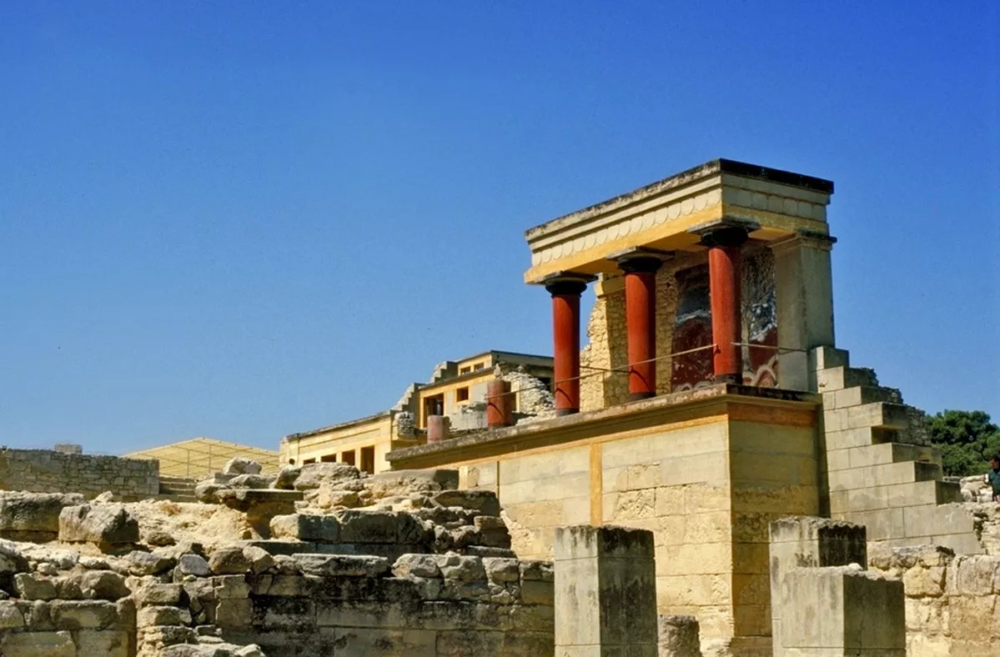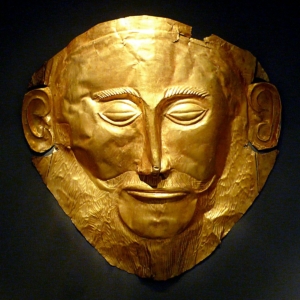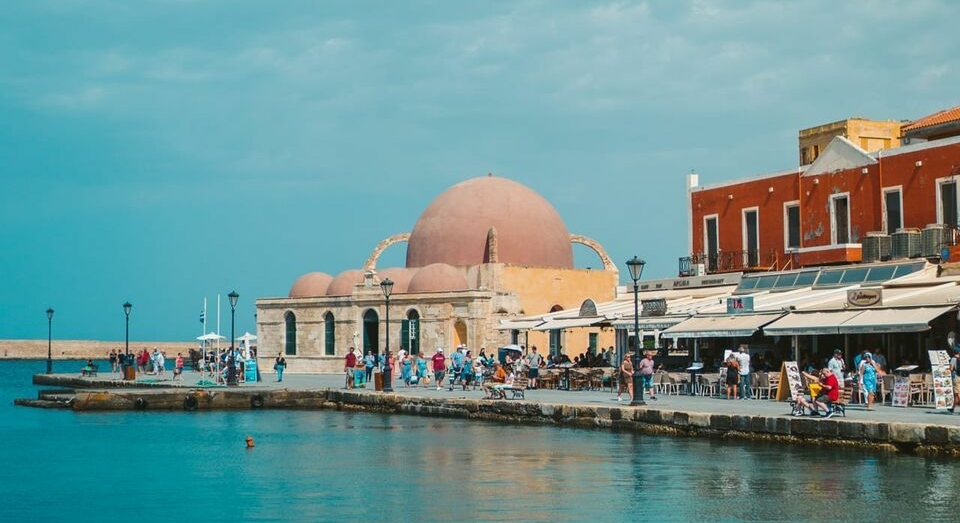News
The History of Crete: From Ancient Civilization to the Modern Island

The Ancient Civilization of the Minoans: A Fascinating Mystery
Crete, the birthplace of the Minoan civilization, unveils the secrets of a distant era shrouded in mystery. Explore the remains of this flourishing Bronze Age civilization that thrived between 3000 and 1100 BCE. Immerse yourself in the enchanting atmosphere of the legendary palaces scattered across the island, with the most famous one being the Palace of Knossos. This fascinating archaeological site transports visitors to a bygone era when the Minoans were at the forefront of cultural and technological development.
Within these majestic palaces, colorful wall frescoes tell captivating stories of daily life, religious rituals, and festive celebrations. The labyrinthine mazes, such as the one depicted in the myth of the Minotaur, ignite the imagination and prompt reflections on the mysterious rituals and practices of the Minoans. These refined and intricate artistic representations attest to the expertise of Minoan artisans, whose works have been found throughout the Mediterranean region.
Beyond their art and architecture, the Minoans were also known for their major role in the trade networks of the time. Thanks to their strategic geographical location, they developed extensive trading networks and established contacts with other civilizations in the Eastern Mediterranean. Their powerful maritime fleet enabled them to expand their influence and establish lasting cultural connections with neighboring peoples.
However, despite archaeological discoveries and accumulated knowledge over the years, many mysteries still surround the Minoan civilization. The collapse of this civilization remains a subject of debate among researchers, and certain aspects of Minoan daily life, such as their Linear A writing system, remain only partially deciphered. This aura of mystery adds a fascinating dimension to the history of Crete and continues to attract archaeology and ancient history enthusiasts from around the world.
The Minoan civilization has left an invaluable cultural and artistic legacy that profoundly influenced later civilizations in the Mediterranean. The Minoans played a significant role in shaping the history of Crete, and their heritage still endures today, making the island a unique destination where history harmoniously blends with the natural beauty of the Cretan landscapes.
The Impressive Remnants of Ancient Greece: Testimonies of Grandeur

After the downfall of the Minoan civilization, Crete was conquered by the Mycenaeans, a Greek-speaking people, bringing with them a new era of cultural and artistic development. Throughout the island, the remnants of this glorious period are omnipresent, bearing witness to Crete’s past grandeur and its significance in the ancient world.
One of the most iconic sites from this period is undoubtedly the Palace of Knossos. According to Greek mythology, it was once the legendary labyrinth where the Minotaur, a creature with the body of a man and the head of a bull, was imprisoned. Exploring this fascinating palace offers an immersive dive into the history of ancient Crete. Wander through rooms adorned with wall frescoes depicting scenes of daily life, religious rituals, and historical events. Let yourself be captivated by the architectural ingenuity of that era, with its labyrinthine corridors and vast courtyards.
Beyond Knossos, numerous other archaeological sites dot the island. Among them, the site of Phaistos provides a unique glimpse into life in Crete during the Bronze Age. With its well-preserved ruins and intriguing history, Phaistos is a must-visit for archaeology enthusiasts. The ancient cities of Gortyn and Malia also house archaeological treasures, offering insights into the lifestyles and power structures of that time.
The influences of ancient Greece can also be found in contemporary Cretan culture. Music, dance, and local traditions have deep roots in ancient practices. Traditional festivals, such as Cretan weddings, are an opportunity to celebrate ancestral customs and keep the memory of the island’s history alive.
Crete, with its archaeological wealth and ancient heritage, is a true paradise for history and archaeology enthusiasts. Every stone, every monument tells a fascinating story, inviting visitors to travel back in time and discover the echoes of the past that still resonate today. Crete is truly a treasure trove of history, where the past and present harmoniously intertwine, offering visitors a unique cultural and intellectual experience.
Byzantine, Venetian, and Ottoman Influences: A Multicultural Heritage

Crete, due to its strategic location at the crossroads of different civilizations, has been the stage for numerous foreign influences throughout its history. From the Romans to the Byzantines, from the Venetians to the Ottomans, each period of domination has left an indelible mark on the island, creating a unique multicultural heritage.
The Byzantine era left its mark on Crete with the construction of numerous churches and monasteries. The frescoes and icons adorning these buildings testify to the importance of Orthodox religion in the lives of the island’s inhabitants. Magnificent Byzantine churches, such as the Panagia Kera Church in Kritsa or the Saint-Titou Church in Heraklion, provide valuable insights into religious art and architecture of the time.
The arrival of the Venetians in the 13th century profoundly transformed Crete. The Venetians built powerful fortresses and developed a network of fortified cities throughout the island. Architectural gems, such as the Venetian Fortress of Rethymnon or the Koules Fortress in Heraklion, bear witness to their presence and influence. Cretan cities thrived under Venetian rule, becoming centers of trade and culture. Venetian architectural influences are still visible today, particularly in the narrow alleyways, paved squares, and magnificent buildings with Italian influences.
In the 16th century, Crete fell under the rule of the Ottoman Empire. This period brought about new changes in Cretan architecture and culture. Mosques, Turkish baths, and caravanserais bear witness to Ottoman influence. The souks, where one can still stroll in certain Cretan cities, evoke the commercial exchanges and encounters between different cultures.
Today, Crete is the result of this harmonious blend of cultural influences. Cretan architecture, with its traditional stone houses, reflects this diversity and historical richness. Cretan cuisine itself is a fusion of Mediterranean flavors, with influences from Greek, Italian, Ottoman, and many other cuisines. Fresh ingredients such as olive oil, vegetables, and aromatic herbs are at the heart of this delicious and healthy cuisine.
Exploring Crete means immersing oneself in a cultural mosaic where Byzantine, Venetian, and Ottoman influences intertwine to create a unique identity. The island offers visitors an exceptional opportunity to discover the evolution and rich legacies of these different historical periods. Whether strolling through the narrow alleys of Venetian medieval towns, visiting Byzantine churches adorned with magnificent frescoes, or uncovering the remnants of Ottoman mosques, every step you take on this island will reveal a new chapter of its captivating history.
In addition to its architectural and cultural heritage, Crete is also home to numerous historical sites. The ancient city of Knossos, with its palaces and ancient structures, is a must-visit for archaeology enthusiasts. The ruins of Gortyn, once one of the largest cities on the island, will transport you through time and allow you to imagine the daily life of the ancient inhabitants. Byzantine monasteries perched on the hills offer a serene atmosphere and breathtaking views of the Cretan landscapes.
In addition to its rich historical heritage, Crete also offers breathtaking natural landscapes. From majestic mountains to the crystal-clear waters of the Mediterranean Sea, the island is full of stunning natural treasures. Explore the Samaria Gorge, the longest in Europe, and be amazed by the surrounding wilderness. Relax on the island’s golden sandy beaches, bathed by the turquoise waters of the sea, and enjoy the mild and sunny Mediterranean climate.
To complete your experience in Crete, indulge in the local gastronomy. Cretan cuisine is renowned for its simplicity and freshness, showcasing local products from the land and sea. Try traditional dishes such as dakos, a salad made with dried bread, tomatoes, feta cheese, and olive oil, or souvlaki, delicious marinated meat skewers. Accompany your meals with a glass of raki, the local spirit, for an authentic Cretan culinary experience.
As a visitor to Crete, you will also have the opportunity to stay in luxury accommodations that offer exceptional comfort and personalized service. Stunning private villas nestled in picturesque landscapes will allow you to relax and fully immerse yourself in the enchanting atmosphere of the island.
In conclusion, Crete is much more than just a vacation destination. It is a journey through time, where every stone, landscape, and flavor tell a story. Explore the remnants of the Minoan civilization, immerse yourself in the Byzantine, Venetian, and Ottoman influences, and be enchanted by the natural beauty of this Mediterranean island.
To learn more about Crete, this jewel of the Mediterranean.
Also, to learn more about RL Consultancy and our luxury villa rental offers.
Or, to get in touch.
